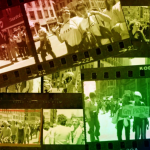(In their new book, What Retirees Want: A Holistic View of Life’s Third Age, authors Ken Dychtwald — a Next Avenue Influencer in Aging — and Robert Morison explore marketers’ misconceptions and mistakes regarding older Americans. The book is based on surveys of more than 100,000 boomers as well as expert interviews and focus groups. In this excerpt, the authors show how marketers frequently misunderstand or lampoon retirees and other older Americans and how they could fix this problem. Full disclosure: Next Avenue Managing Editor Richard Eisenberg was interviewed for the book.)
Due to America’s obsession with youth — ironically formulated and solidified when boomers were young — most marketers direct much of their attention to millennials and Gen Zers. But those cohorts are predominantly cash-strapped, time-constrained and only marginally loyal to products and services. Focusing on the historically “sought-after youth market” is a costly mistake when today’s older men and women now have considerable wealth, time and interests to satisfy.
Ageism continues to blind marketers and prevent them from seeing the growth potential of the retiree market.
Sometimes, ageist bias is overt, even in marketing campaigns and advertisements by companies from tech to finance that could and should be eagerly serving — and profiting from — the retiree market.
Take the 2018 “Don’t Get Mad, Get E-Trade” ads, which depicted buffoonish people in their 80s having to work at jobs they were ill-suited for and make a hash of, including lifeguard and firefighter. They didn’t save enough money for retirement. The campaign simultaneously mocked retirees who were struggling financially and alienated those who actually control the largest share of wealth and investable assets.
Lori Bitter, author of The Grandparent Economy: How Baby Boomers Are Bridging the Generation Gap and a leading expert on the business of aging, pointed out another example: “The Tide detergent ad starts with a full house — a couple, their two adult children and the in-laws just moved in. The couple is folding clothes and talking about the need for one detergent that fits the needs of everyone. The spot is trying to land a humorous point about multi-generational living, but ends with Grandpa entering in his underwear, looking for his pants. Why make fun of him? There are a hundred other clever ways to write that spot.”
Says Modern Elder Academy founder Chip Conley: “Most advertisers get a big F for their efforts to understand the older population.”
Tons of Bad Examples
There are tons of bad examples, and they may be memorable in their ridiculousness. But how do these ads get released? Their creators must think they’re funny. But what’s funny about insensitivity, caricature and ridicule? And how smart is it to alienate a large and growing segment of the market?
Paul Irving, author of The Upside of Aging and chairman of the Milken Institute Center for the Future of Aging, says: “Some may think it’s cute and harmless to make fun of older adults, to make light of their age and experience. I think that if you did that same ad with stereotyped images of women, people of color or LGBTQ+ individuals, there would be outrage, and rightly so.”
Most ageism is less explicit and more the product of ignorance and inexperience than bias and prejudice. It may be less mean spirited, but it’s still off-putting to mature customers and bad for business. It’s ageism by omission.
Far too often, older people are conspicuous in their absence from ads and marketing campaigns. While people over 50 represent 70% of consumer spending, why are they only 20% of the people depicted in media and commercials?
The Message the Ads Send to Older Americans
The message is clear to them: “This brand doesn’t really value me.”
And when businesses try to target the older audience, the messages are often inauthentic, unrealistic and out of touch.
Said Bitter: “The one thing I hear all the time from older people is they don’t see themselves in anything that’s being advertised on television.”
As Marc Freedman, author of How to Live Forever: The Enduring Power of Connecting the Generations and founder and CEO of Encore.org, told us: “They all have the same clichéd ideas about what a good life looks like. It’s like a video stream of stock photos, with people who feel like cardboard characters. People have opened a vineyard or a bed-and-breakfast — a kind of reinvention story that seems effortless, and the clouds part, and the birds sing.”
When Ageism Meets Other Forms of Discrimination in Advertising
Experts we spoke to for What Retirees Want also offered unsettling perspectives on what happens when ageism coincides with other forms of discrimination.
Karyne Jones, CEO of the National Caucus and Center on Black Aging, reflected, “There aren’t many companies reaching out and marketing to the older Black community. Sure, there are Black people in commercials. But with older Black women, they’re going to a pharmacy for a flu shot. Or they’re depicted in caregiving situations, which is a positive light but still stereotyped. They’re not driving a great car or exercising or shopping at the best stores. Maybe a young woman of color is shown in that light, but not older women.”
Michael Adams, CEO of SAGE, the oldest and largest organization in the country dedicated to improving the lives of LGBTQ+ older adults, says explicit and tacit ageism in marketing particularly affect his community.
“Now that companies are marketing to the [LGBTQ+] community, the images that they tend to show are very oriented toward young people — much less likely to show older folks.”
But, Adams adds, marketing campaigns that are specifically geared towards this community tend to be really well received by them.
What Could Help
One reason there’s so much ageism in ads: the advertising industry is disproportionately populated by young people. The average age of agency employees: 34. Because so many of the people working in marketing have never been older, they often don’t know what to make of older customers.
So, what could help change things?
E. Percil Stanford, the renowned gerontologist, author professor and former chief of diversity and inclusion at AARP, offers this recommendation: “Marketing teams need to have more people of color, more people of different ages and backgrounds. Take the time to understand what it is to walk in their shoes, and thus how to get people in those shoes interested in your products and services.”
Mike Hodin, CEO of the Global Coalition on Aging and the former global head of communications for Pfizer, says: “If you’re marketing to women, you might have a couple of women on the marketing team. If you’re marketing to older people, put a seventy-year-old on your marketing team — not just for diversity but because it’s going to help you make money. This isn’t charity, it’s smart business.”
Ageism runs deep, and it’s not just in marketing. It’s in the design of products that require young, facile fingers and sharp eyesight, for the length of time it takes traffic lights to change and the auditory range on our cell phones. It’s in the management systems and cultures of organizations and job markets that assume youth outperforms age [based on no evidence] and the fact that geriatrics remains the least popular specialty in medicine.
When organizations don’t take active interest in studying and understanding the retiree market and don’t have practice and experience doing so, the default is to depict older people with bland or negative stereotypes and outdated narratives about what it means to be older. When older people are in ads, they’re seldom portrayed authentically. This lack of attunement with today’s and tomorrow’s retirement dreams translates into an absence of sensitivity, respect and imagination. Most organizations remain willfully ignorant about retirees — the most massive growth market hiding in plain sight.
This article originally appeared in Next Avenue on July 15, 2020.







